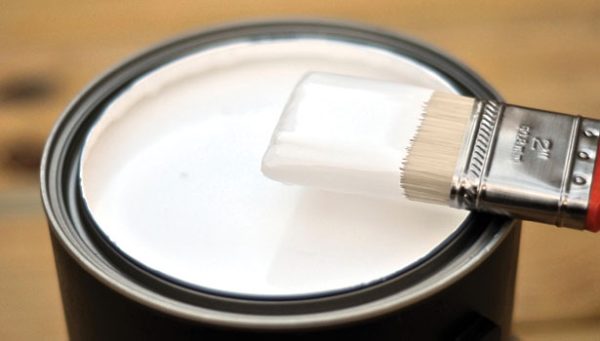
Calcium carbonate is the most widely used extender pigment in coatings. It plays a role in filling the skeleton and substrate in the paint film, and at the same time improves the performance of the coating.
For example, 70-80% of putty powder is heavy calcium;
In thick paint, the dosage of calcium carbonate is generally more than 30%;
In water-based coatings, the dosage of calcium carbonate is 20-60%;
In topcoats, calcium carbonate is an ideal matting filler. For example, matte cheese glue wall paint contains 11.5% heavy calcium carbonate;
In metal anti-rust coatings, calcium carbonate has a certain anti-rust effect, and the appropriate dosage is about 30%;
Polyvinyl alcohol 106, 803 and other building interior wall coatings generally contain 16%-20% of light calcium carbonate;
Interior decorative paints, such as polyvinyl acetate latex paint, usually contain about 10% calcium carbonate.
1. Calcium carbonate for latex paint
The role of calcium carbonate in latex paint:
As an extender pigment, it has a filling effect, making it fine, uniform and highly white.
It has a certain dry covering power, and ultra-fine products are generally used. When its particle size is close to the particle size of titanium dioxide, the covering effect of titanium dioxide can be improved.
It can improve the strength, water resistance, dryness and scrub resistance of the paint film.
Reduce costs, usage is 10%-50%.
For example, ultra-fine heavy calcium carbonate powder materials have significant effects on shortening the dispersion sanding time in the production process of latex paint, improving hiding power, improving latex viscosity, reducing the amount of titanium dioxide, and improving the polishing performance of putty.
At present, heavy calcium carbonate powder has good application effect in interior wall latex paint. Its particle size control is d97<10μm, d50 is about 1.5μm, whiteness>95%, and CaCO3≥98%.
2. Calcium carbonate for automobile paint
When the car is driving, the bottom of the car and the wheel fenders are often impacted and washed by sediment, gravel, sewage, etc. Therefore, the paint applied on the surface of the substrate is easily damaged. If it loses its anti-corrosion ability, the substrate will be easily damaged. It will soon rust and wear out.
In order to solve this problem, it is necessary to coat these parts with vehicle bottom coatings that are resistant to sand and gravel impact and anti-corrosion properties. PVC plastisol system is a type of automobile chassis paint. It is mainly composed of PVC paste resin, plasticizer, filler (calcium carbonate), stabilizer, tackifier, solvent and other additives.
Automobile chassis paint is required to be easy to spray, have low viscosity and good fluidity during the spraying process. After application, it is required to have a high viscosity to prevent sticking and sagging. This requires that the viscosity of the paint becomes significantly lower at high shear speeds, so that it can be sprayed and leveled easily; and that it has high viscosity at low shear speeds or in a static state can prevent the paint from sinking and sagging. This property is called thixotropy, and nano calcium carbonate products can well meet this requirement in terms of construction performance and structural performance.
Nano calcium carbonate specially used for automobile chassis paint has the following characteristics:
Has a high degree of activation;
Has a high yield stress;
Has good thixotropy;
3. Calcium carbonate for ink
Calcium carbonate mostly plays a filling role in printing inks to reduce costs and increase volume. Generally, high-performance ultrafine calcium carbonate is required. Its main features are fine particles, about 0.02-1.0 μm, large specific surface area, and oil absorption. It has the advantages of large quantity, good transparency, good brightness and good stability.
In practical applications, it is most suitable to use nano-light calcium powder or nano-active light calcium powder. However, the price of nano active light calcium powder is high, so most of them use nano light calcium powder as ink production.
The ink formulated with activated calcium carbonate has better texture and viscosity, has good printing performance, dries quickly, and has no side effects. Due to the small particles, it is used in ink products to show excellent dispersion, transparency, excellent gloss and hiding power, as well as excellent ink absorption and drying properties, so the prints are fine and the dots are complete. Especially after resin binders are widely used in inks, activated calcium carbonate has almost replaced other fillers due to its excellent stability.
4. Calcium carbonate for powder coatings
Calcium carbonate is a white filler that is cheap and does not contain heavy metal elements. It can completely replace the commonly used barium sulfate filler in powder coatings. Mainly used for coating toys, strollers, sporting goods, kitchen utensils and home appliances, etc.
Applications of calcium carbonate in powder coatings:
Can be used as a filler in high-gloss coating products;
Semi-gloss paint products can generally be prepared by directly adding calcium carbonate without adding matting agents, thus saving costs;
The inorganic pigment itself is white and can be used in conjunction with titanium dioxide to reduce costs;
Compared with other fillers, calcium carbonate is most suitable for some environmentally friendly products that require low heavy metal content, such as children’s toys, strollers, etc.;
It can improve the powder coating rate and spraying area of the paint, especially when used in mixed powder.
For example, ultrafine activated calcium carbonate has similar oil absorption and light refractive index to barium sulfate, but its density is much smaller than barium sulfate. With the same filler dosage, the density of powder coatings can be reduced, thereby increasing the spraying area. At the same time, due to its good charging performance, the powder coating rate of the powder coating can be improved. In addition, the edge coverage, coating film hardness, looseness and anti-caking properties of powder coatings will also be improved to a certain extent.
